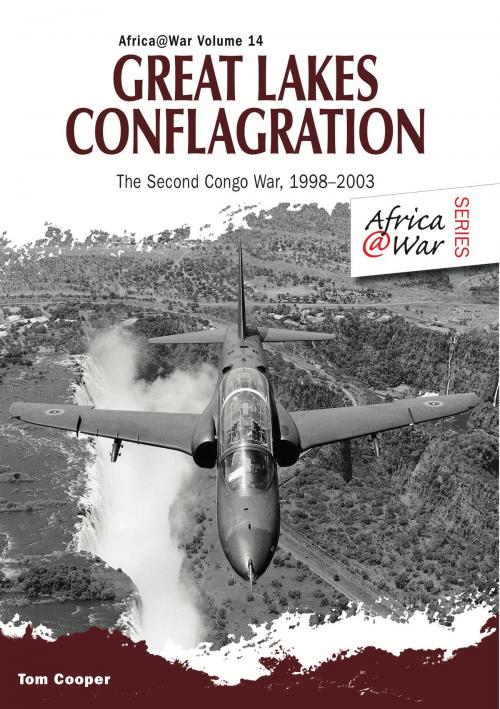Great Lakes Conflagration
Second Congo War, 1998–2003
Nonfiction, History, Africa, Social & Cultural Studies, Political Science, International, International Relations, Modern| Author: | Tom Cooper | ISBN: | 9781910294260 |
| Publisher: | Helion and Company | Publication: | November 19, 2013 |
| Imprint: | Helion and Company | Language: | English |
| Author: | Tom Cooper |
| ISBN: | 9781910294260 |
| Publisher: | Helion and Company |
| Publication: | November 19, 2013 |
| Imprint: | Helion and Company |
| Language: | English |
Great Lakes Conflagration' is the second in two volumes covering military operations in the Democratic Republic of Congo (DRC) at the turn from the 21st century. This volume explores developments in the DRC that led to the outbreak of violence in August 1998, and systematically details the continued build-up and status of the Congolese, Rwandan and Ugandan armies, as well as the forces of Angola, Namibia, Zimbabwe and other African countries that were sucked into the conflict.
Recounted is the Rwandan attempt to topple the government of Laurent Kabila through an operation that saw a redeployment of some of best Rwandan units from Kigali and Goma to the western DRC, resulting in a series of fierce air-land clashes with Zimbabwean and Angolan forces and culminating in the Battle of Kinshasa. Also described is the fighting along what became the 'Eastern Front' in the DRC, as Zimbabwean and allied troops attempted to stop Rwandan, Ugandan and rebel advances out of Kivu Province in the direction of the Congo River through 1998 and 1999.
These early phases of the war, or 'The First African War' as it has come to be known, were characterized by surprising outflanking and infiltration maneuvers; foreign mercenaries; Zimbabwean Hawk and Lynx light strikers flying intensive combat operations from N'Djili airport, half of which was occupied by Rwandans, Ugandans and Congolese rebels; interdiction strikes guided by special forces deployed deep behind enemy lines; operations of helicopter gunships and transport aircraft under intense ground attack in support of troops cut off by advancing opponents; use of transport aircraft as makeshift bombers in bad weather and by night and clashes of armored forces and many other elements of 'high-technology' warfare.
All the protagonists deployed their best military units, their best equipment and some of their best military commanders, yet despite their best efforts, and hampered by in-fighting, the conflict ultimately resulted in a stalemate which dragged on for a further three years while negotiations bogged down.
This book is illustrated with an extensive selection of exclusive photography, color profiles and markings, making it of special interest to enthusiasts and professionals alike.
Great Lakes Conflagration' is the second in two volumes covering military operations in the Democratic Republic of Congo (DRC) at the turn from the 21st century. This volume explores developments in the DRC that led to the outbreak of violence in August 1998, and systematically details the continued build-up and status of the Congolese, Rwandan and Ugandan armies, as well as the forces of Angola, Namibia, Zimbabwe and other African countries that were sucked into the conflict.
Recounted is the Rwandan attempt to topple the government of Laurent Kabila through an operation that saw a redeployment of some of best Rwandan units from Kigali and Goma to the western DRC, resulting in a series of fierce air-land clashes with Zimbabwean and Angolan forces and culminating in the Battle of Kinshasa. Also described is the fighting along what became the 'Eastern Front' in the DRC, as Zimbabwean and allied troops attempted to stop Rwandan, Ugandan and rebel advances out of Kivu Province in the direction of the Congo River through 1998 and 1999.
These early phases of the war, or 'The First African War' as it has come to be known, were characterized by surprising outflanking and infiltration maneuvers; foreign mercenaries; Zimbabwean Hawk and Lynx light strikers flying intensive combat operations from N'Djili airport, half of which was occupied by Rwandans, Ugandans and Congolese rebels; interdiction strikes guided by special forces deployed deep behind enemy lines; operations of helicopter gunships and transport aircraft under intense ground attack in support of troops cut off by advancing opponents; use of transport aircraft as makeshift bombers in bad weather and by night and clashes of armored forces and many other elements of 'high-technology' warfare.
All the protagonists deployed their best military units, their best equipment and some of their best military commanders, yet despite their best efforts, and hampered by in-fighting, the conflict ultimately resulted in a stalemate which dragged on for a further three years while negotiations bogged down.
This book is illustrated with an extensive selection of exclusive photography, color profiles and markings, making it of special interest to enthusiasts and professionals alike.















